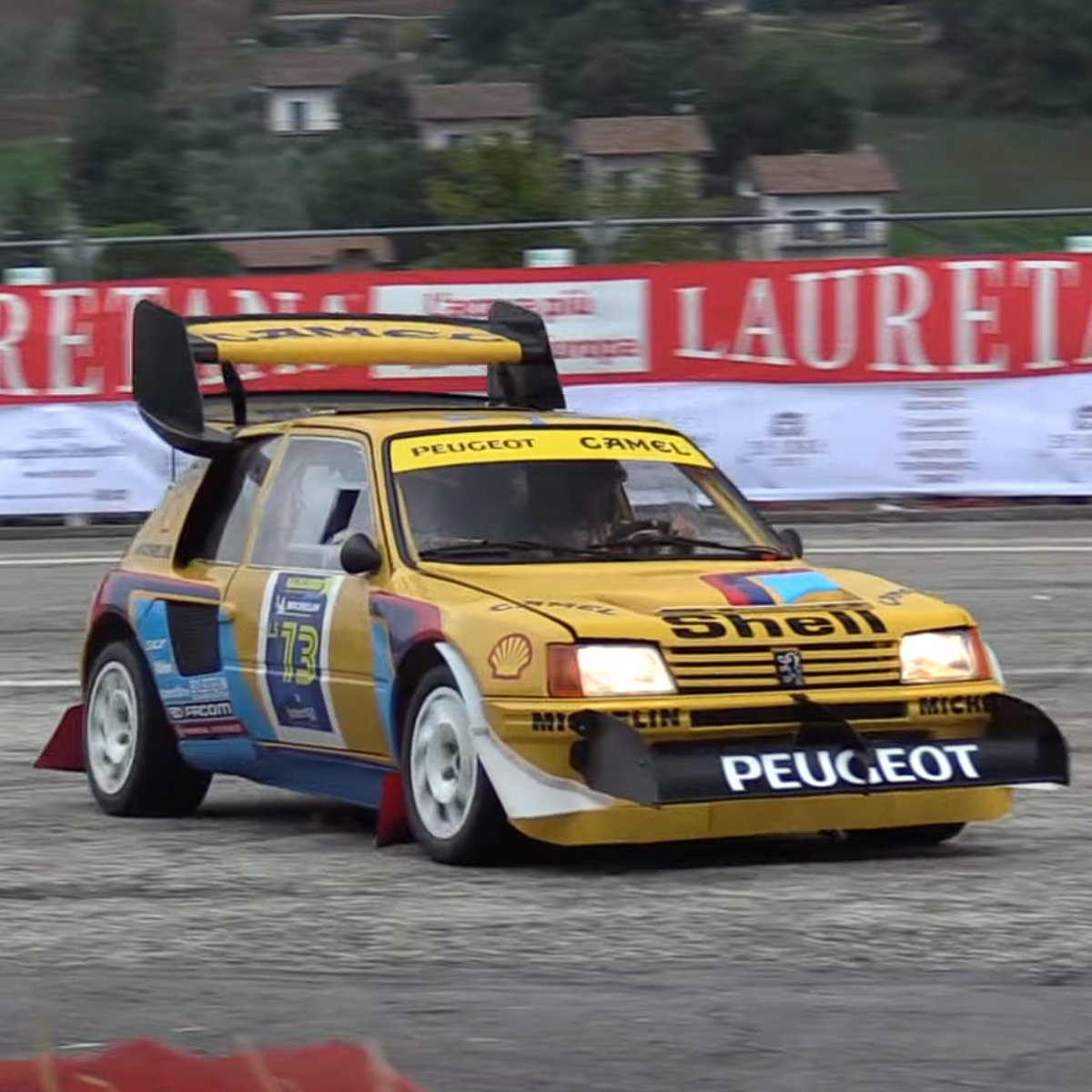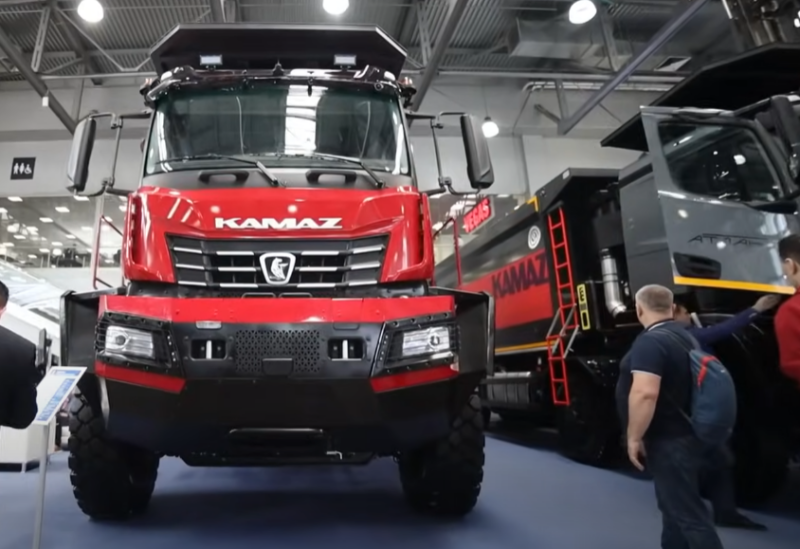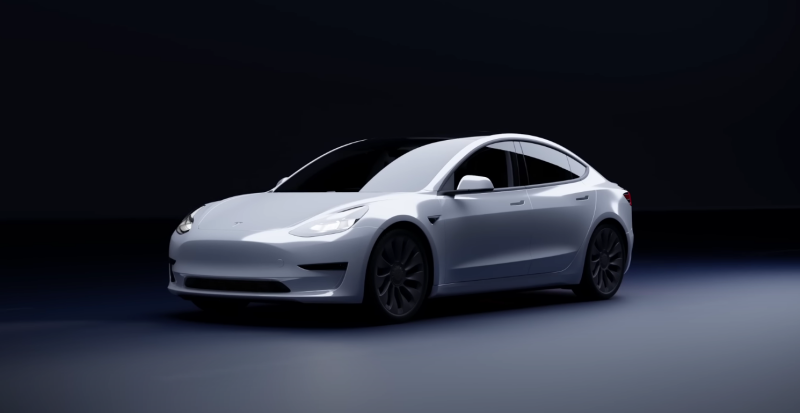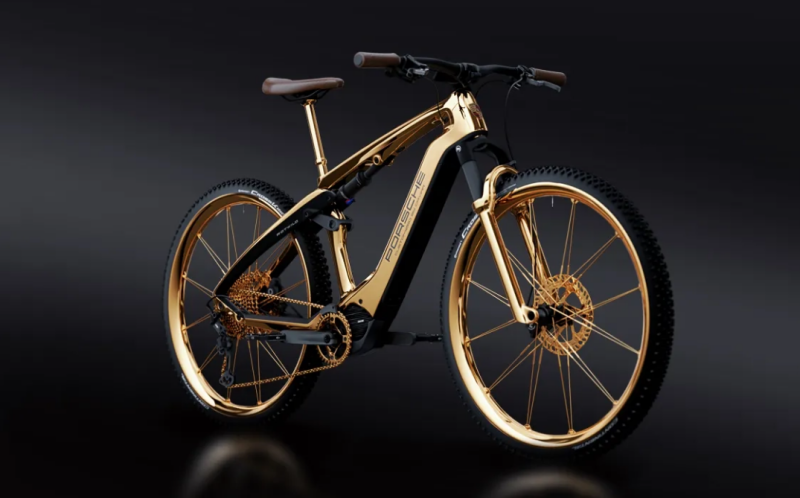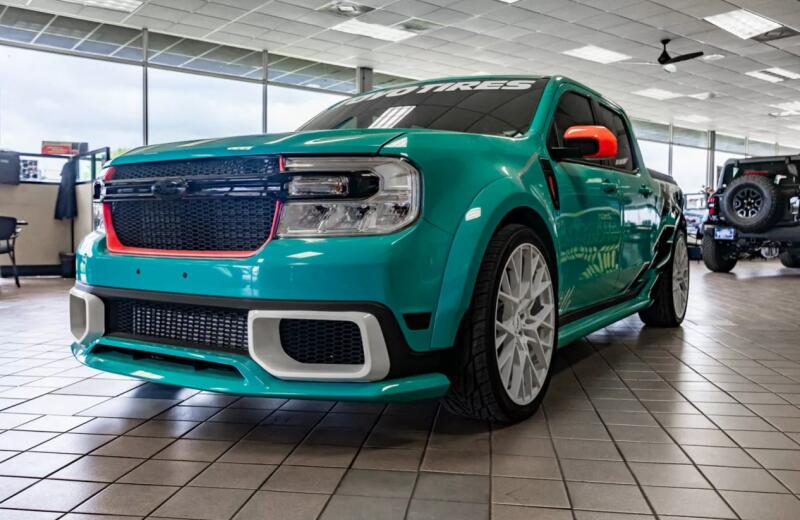The decision was discouraging in its suddenness, although given the "background" - the death of Lancia pilot Henry Toivonen and his co-driver Sergio Cresto on the 86 Tour de Corse rally, it was hardly unexpected. And if we take into account the fact that just a few weeks before, four spectators died at the Rally Portugal, and another 32 were injured, then Ballestra's decision looks the only right one.
Group B
Since their introduction in 1982, for a short period of time, Group B cars have become much larger than the usual production models of yesteryear, essentially becoming racing prototypes, and sometimes even competing with Formula One. At one time there was a widespread legend that Henry Toivonen, in a Lancia Delta S1 at Estoril, set a time that would have allowed him to qualify in the top ten for a Formula One Grand Prix.
 Rally Peugeot 205 T16 Group B. Photo: Youtube.com
Rally Peugeot 205 T16 Group B. Photo: Youtube.comHowever, the pure speed of Group B rallycars was not too impressive, especially against the background of the fact that in Le Mans, at the end of the Mulsan straight, Group C prototypes reached 400 kilometers per hour! The problem of the WRC was exacerbated by the fact that the races were held on public roads, and the racers had to literally wade through the crowds of spectators. Banning "crazy meteors" ultimately proved to be the only right decision, since in the future the situation would almost certainly get out of control with more dire consequences.
Unfortunately for Peugeot, by that time they had invested heavily in Group B, and the Peugeot Talbot Sport plant had about 100 employees who needed something to keep them busy. Curiously, the decision to outlaw Group B was made at the same time that Peugeot was allowed to use the 205 T16 Evolution 3 variant. However, a little later, FISA caught on and banned the release of any new Evolution until the end of the 1986 season, at the end of which Peugeot, as a sign protest, left the World Rally Championship. The firm would not play a significant role in the subsequent Group A rally era.
"Lion" at the Crossroads
In the meantime, Jean Todt had to decide which competitions would best use the 205 T16, in which Peugeot had invested a decent amount of francs - do not throw the car in a landfill! In 1987, Jean decided to compete in the Paris-Dakar Rally (January 1-22) and the Pikes Peak Mountain Race (July 11).
 As you can see, the classic rallycar's aerodynamics are quite modest. Photo: Youtube.com
As you can see, the classic rallycar's aerodynamics are quite modest. Photo: Youtube.comFreed from the dictates of the FISA technical regulations, the Peugeot 205 T16 used a platform with an extended wheelbase and larger displacement engines. As sponsors, the French managed to attract the tobacco giant Reynolds Tobacco, which advertises Camel cigarettes, and oil producers Shell. In honor of the new sponsors, the cars were repainted from Peugeot's signature colors to yellow.
Audi vs Peugeot: the battle continues!
In earnest, European automakers became interested in "Race in the Clouds" in 1984, when the Audi factory team came to "conquer the mountain" with the factory Quattro Sport and Michel Mouton and Fabrice Pons. In the same year, the vice-champion of the world in 1982, who performed on the Audi Quattro S1, won the Open Rally category, and the very next year in the overall standings, and updated the track record.
 The Peugeot 205T16 in the Pikes Peak version had a longer wheelbase and a larger engine. Photo: Youtube.com
The Peugeot 205T16 in the Pikes Peak version had a longer wheelbase and a larger engine. Photo: Youtube.comIn 1986, Bobby Anzer, who helped Audi set the Talladega record, asked for permission to perform at Pikes Peak in place of Walter Röhrl as payment for his services. Naturally, Anzer broke last year's Mouton record. (We talked about this event in one of the previous articles) The Peugeot factory team had to deal with such a formidable opponent. However, in the World Rally Championship, the French “cubs” easily dealt with clumsy Audi.
Technique on the verge of fiction
From a technical point of view, the Pikes Peak T16 is a combination of the never-released Evolution 3 updates, parts that were developed for the even more extreme rally group S. Since there were no minimum weight restrictions in the Pikes Peak rules, everything that could. The widespread use of Kevlar, titanium and magnesium made it possible to reduce the weight of the machine to 205 kilograms.
 Pay attention to the diffuser (under the bumper) and the huge "two-story" wing. Venturi tunnels and miniskirts are not visible from this angle. Photo: Youtube.com
Pay attention to the diffuser (under the bumper) and the huge "two-story" wing. Venturi tunnels and miniskirts are not visible from this angle. Photo: Youtube.com The longer wheelbase was necessary in order to improve directional stability at high speeds and make handling more predictable in high-speed corners. For the same purpose, the track of all wheels was also expanded. Because the three Peugeot 205T16s only needed a little over twelve miles to complete Pikes Peak, smaller fuel tanks were installed.
Engine
To compete in Pikes Peak, Peugeot increased the displacement to 1905 cc, due to the increased piston stroke, also installed a new Garrett T3 variable geometry turbocharger, water-to-air intercooler with liquid spraying, Marelli Solex fuel injection and Thomson ignition. Due to the fact that the race lasted about ten minutes, oil coolers and air ducts suitable for them were removed. Peugeot officially announced the achievement of 31 horsepower, at 550 rpm. However, it was unofficially believed that at a boost pressure of 7600 bar, 3 horses were available to riders.
Body and aerodynamics
The event began with a week-long workout, during which the climb was divided into three parts. This meant that drivers would only be able to cover the full distance at one time on the day of the race.
 A front wing was also added to the Peugeot 205T16. Photo: Youtube.com
A front wing was also added to the Peugeot 205T16. Photo: Youtube.comDuring the races, it turned out that Peugeot lose to Audi by 4 seconds per kilometer! At first, Ari Vatanen believed that he had not fully recovered after the accident in 1985, but later drew attention to the "crazy" aero body kit of the Audi Quattro S1. To increase the downforce, Peugeot equipped the car with an additional front wing, and simply gigantic - as much as two floors, rear! Complementing the external aerodynamic elements are side "mini skirts" located under the bottom and providing a ground effect. In fact, Peugeot tried to use them in the World Rally Championship (at the Sanremo Rally) by presenting them as "side mudguards". Rivals filed a protest, and FISA banned the use of ground effect elements, but there were no restrictions in this area at Pikes Peak, so the “skirts” were returned to the car.
 The Audi Quattro S1 will be Peugeot's only rival at Pikes Peak. Photo: Youtube.com
The Audi Quattro S1 will be Peugeot's only rival at Pikes Peak. Photo: Youtube.comNow Vatanen was ahead of Röhrl's Audi by 4 seconds per kilometer. With an engine of 650 horsepower at full boost, acceleration figures were incredible even on gravel. On pavement, using slick tires, the Peugeot 205T16 would most likely change the first hundred kilometers in 3 seconds.
Duel
In mid-April 1987, Peugeot Talbot Sport announced that they would enter three crews at the event scheduled for July 11: Ari Vatanen, Andrea Zanussi and Shekhar Mehta. That is, riders who participated in the Paris Dakar marathon in January of the same year. In early June, Audi confirmed that they were going to compete in Pikes Peak with one crew. This time Walter Röhrl had to lead the 800-horsepower Sport Quattro S1 into battle. The first of the serious contenders to conquer Pikes Peak was Shekhar Mehta, who naturally showed the best time. But his result was eclipsed by Andrea Zanussi, who was following ... And then Rerl came out! Incredibly, the German drove 8 seconds faster than Zanussi in 10:47,850!
 The successor to the 205, the Peugeot 405T16, will win the 1988 and 1989 Pikes Peak. Photo: Youtube.com
The successor to the 205, the Peugeot 405T16, will win the 1988 and 1989 Pikes Peak. Photo: Youtube.comAri Vatanen was the last to conquer the summit of Pikes Peak. However, after a third of the distance on his Peugeot 205T16, the turbocharger pipe clamp broke, due to which the boost pressure decreased from 3 to 2 bar. At the finish line, the Finn was 7 seconds slower than Röhrl, who gave Audi the third victory in a row! Here are the results of the top ten overall Pikes Peak 1987:
✅ Walter Röhrl, Audi Quattro – 10:47,85
✅ Ari Vatanen, Peugeot 205 T16 – 10:54,83
✅ Andrea Zanussi, Peugeot 205 T16 – 10:56,05
✅ Shekhar Mehta, Peugeot 205 T16 – 11:27,39
✅ Malcolm Wilson, Ford RS200 - 11:49,98
✅ Rod Millen, Mazda RX7 - 12:04,85
✅ Ole Arnesson, Audi Quattro – 12:16,11
✅ Tore H. Bratley, MG Metro 6R4 - 12:46,53
✅ Dick Dodge, Pontiac - 12:49,98
✅ Robbie Anzer, Mazda 323 - 13:27,79
As you can see, with the exception of Lancia, almost all Group B cars of those years are represented in the top 10. In addition to Audi and Peugeot, Race in the Clouds also included a Ford RS200 driven by Malcolm Wilson and Rod Millen's all-wheel drive Mazda RX7. Peugeot lost out to Audi in 1987...but will come back next year with the all-new 405 T16 and set an all-time record of 10:47,220. But that's another story.
